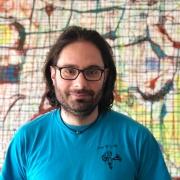
This type of art grows strong from the need to legitimize culture as a fundamental part of the process to recover and identify the community.
Days and weeks go by and we ignore that some labels are here to stay or have been around for years, but only now become innovative. These labels related to art could be social art, art therapy, educational art...and especially one that is the topic of this column: community art. I don’t say that these practices are inadequate, just that, sometimes, epithets are abused to bring value to actions and this could lead to vague contradictions and directly falsity.
Community art is framed within the logic of a community’s cultural development. It grows strong from the need to legitimize culture as a fundamental part of the process to recover and identify the community.
By community arts we understand a current of artistic practices that, since the 60s’ and movements such as feminism, environmentalism, and identity policies, develop their own cultural processes linked to a specific community with the aim of initiating a social transformation or change.
We may come across actions and experiences used within the community to have a social or community label without this leading to a transformation in the community. We may find results-oriented actions that don’t place the process at the heart of the social, cultural and educational actions that bring social transformation. So, we often see actions that are not transformative at all but, nevertheless, refer to themselves as community actions.
To transform through community arts, the first step is to work based on evidence; detecting the real needs that are worked with, through a community-based diagnosis or prospection. All actors and leaders in a given community must be involved in this diagnosis, and they must also participate in the design, implementation, assessment and follow-up stages. Once this is done, it takes setting up and developing a large, strong and evident network to explore the community, build bridges and create synergies among the aforementioned actors to bring others onboard and to multiply the impact on the community.
The ultimate goal is, at the end of the process, to make a positive transformation happen in the community that is permanent, permeable, evident and redistributed. At the same time, it must also be a conscious transformation with feedback to the community so that it can truly corroborate this change, as the community is the true protagonist of the action.



Add new comment